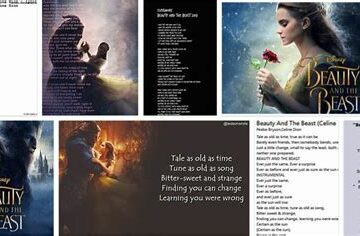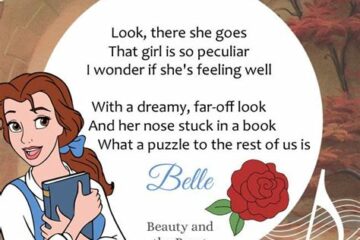
The Evolution Of Disney Characters Over The Decades
### The Evolution Of Disney Characters Over The Decades
Since its inception in the early 20th century, Disney has enchanted audiences worldwide with its iconic characters and stories. The evolution of Disney characters reflects not only advances in animation technology but also shifts in cultural norms and social values. From the innocent charm of Mickey Mouse to the richly detailed princesses of today, the transformation of these beloved figures is a fascinating journey through history. This article explores the key design changes, the impact of societal shifts, and fan reactions that have shaped Disney characters over the decades. Join us as we delve into how these beloved figures have evolved, influencing animation styles and captivating generations of viewers along the way.
The Evolution Of Disney Characters: A Historical Overview
The world of Disney characters has seen a remarkable transformation since the inception of the animation studio in the 1920s. The evolution of these iconic figures not only mirrors changes in animation technology but also reflects broader social and cultural shifts. From the early simplistic designs of cartoon characters to today’s multi-dimensional personalities, the journey of Disney characters narrates a fascinating story of creativity and adaptation.
The timeline of Disney’s character evolution begins with the creation of Mickey Mouse in 1928. Mickey’s charming and relatable personality captivated audiences and set the stage for future characters. He represented a blend of innocence and mischief, characteristics that would later become staples in Disney’s storytelling.
During the Golden Age of Animation in the 1930s and 1940s, characters such as Snow White, Pinocchio, and Dumbo emerged, showcasing more sophisticated designs and storytelling techniques. These characters were often influenced by fairy tales and folk stories, appealing to both children and adults alike. The detailed animation brought them to life, creating emotional connections with the audience.
As the decades passed, the evolution continued. In the 1980s and 1990s, Disney introduced characters like Ariel from The Little Mermaid and Simba from The Lion King. These characters reflected a newfound depth and complexity, often grappling with identity and personal growth. This era marked the arrival of the Disney Renaissance, which emphasized strong narratives and character development, paving the way for modern animated storytelling.
In recent years, the character designs have further evolved to embrace diversity and inclusivity. Characters like Moana and Elsa from Frozen showcase a range of cultural backgrounds and empower narratives around self-acceptance and resilience. This shift not only enriches Disney’s character roster but also reflects societal changes and the importance of representation in media.
Overall, the evolution of Disney characters highlights a unique blend of artistic innovation and cultural relevance, demonstrating how animation can not only entertain but also mirror the changing world around us.
Key Design Changes In Disney Characters Through The Years
The journey of Disney character design reflects significant shifts in both artistic styles and cultural context. From the 1920s to the present day, the transformations have mirrored changes in technology, audience expectations, and the company’s evolving narrative standards.
Initially, Disney characters were characterized by a simplistic, cartoonish appearance. Mickey Mouse debuted in 1928 with exaggerated features such as large ears and simple facial expressions. This early design, known as the evolution of the rubber hose style, allowed for fluid movements and exaggerated actions, a hallmark of early animation.
As the decades progressed, Disney characters underwent significant refinements. The 1937 release of Snow White and the Seven Dwarfs marked a turning point. The characters’ designs became more detailed and expressive, reflecting a deeper understanding of human emotions and realism. With the advent of Technicolor, characters began to showcase more vivid colors and textures, enhancing overall visual engagement.
In the 1980s and 90s, Disney incorporated more diverse character designs that echoed cultural narratives. For example, characters like Aladdin and Mulan were designed to represent their respective backgrounds authentically. The studio moved away from stereotypical portrayals to give each character a unique design that resonated with their stories and cultural significance.
In recent years, with advances in CGI technology, Disney characters have seen a new evolution. Films like Frozen and Moana showcase incredibly detailed character models with realistic textures and animations. The characters not only possess unique traits but also embody a range of body types, skin colors, and personalities that reflect today’s societal values and inclusivity.
These design changes have had a profound impact on the way audiences connect with Disney characters. As viewers see characters that resonate with their own experiences and backgrounds, the relationship between the audience and the characters deepens. Overall, the Key Design Changes in Disney characters through the years demonstrate a commitment to artistry that evolves alongside cultural shifts, making the evolution of Disney characters a remarkable aspect of animation history.
Impact Of Social Changes On Disney Character Evolution
The evolution of Disney characters has been significantly influenced by the shifting social landscape over the decades. As society progresses, values and norms transform, prompting Disney to adapt its characters to reflect contemporary views and issues. This responsiveness not only allows Disney to stay relevant but also fosters a deeper connection with audiences.
Throughout the years, Disney has faced criticism for its portrayal of gender roles, race, and cultural representation. Initially, many characters adhered to traditional stereotypes which mirrored the prevailing societal attitudes. For instance, early princesses often depicted passive characters who depended on male protagonists for their salvation, echoing the gender dynamics of their time. However, as the feminist movement gained momentum and discussions surrounding gender equality became more prominent, Disney began to evolve its character lineup.
Characters like Mulan and Merida broke the mold, showcasing strength, independence, and a refusal to conform to societal expectations. This shift reflects a significant change in how women are portrayed in media and has had lasting impacts on the evolution of Disney storytelling, encouraging young audiences to aspire to greater agency and autonomy in their narratives.
Furthermore, the portrayal of multicultural characters has progressed, aligning with a more globalized society. Movies like *Moana* and *Raya and the Last Dragon* embody efforts to authentically represent diverse cultures and narratives, moving away from past oversimplifications or inaccuracies. This evolution demonstrates Disney’s recognition of the importance of inclusivity and its willingness to listen to its audience. Such changes not only cater to broader demographics but also educate viewers about different cultures, fostering empathy and understanding.
The impact of social changes on Disney character evolution illustrates the studio’s adaptability and commitment to reflecting society’s developing values. As we continue to witness these transformations, it is clear that Disney’s characters will evolve in tandem with social progress, making them not just entertainment icons but also significant cultural touchstones for generational dialogue about identity and representation.
Fan Reactions: The Evolution Of Disney Characters Over Time
As the years progressed, fans of Disney have experienced a wide array of emotions regarding The Evolution of their beloved characters. Initially, characters like Mickey Mouse and Snow White evoked pure joy and nostalgia, representing the innocence and optimism of the early 20th century. However, as the animation landscape transformed, so too did the fanbase’s connections to these figures.
Many long-time fans often reminisce about the classic designs and simple story arcs that characterized earlier Disney films. The charm of traditional hand-drawn animation holds a special place in the hearts of those who grew up in the ’90s and earlier. As a result, any modifications to these classic characters, such as updated designs or new storylines, have sometimes met with resistance. For example, while some appreciate the more complex personality developments seen in recent films, others lament the loss of the uncomplicated characters they adored as children.
Moreover, the introduction of newer characters has elicited varying reactions. Characters from films like Frozen and Moana have been widely embraced for their relatable qualities and modern narratives. Fans appreciate how these characters reflect evolving societal values, promoting themes of empowerment and individuality. Yet, this shift has also spurred discussions about what constitutes a ‘true’ Disney character, with some fans expressing concern that the essence of Disney’s traditional storytelling may be diluted.
Social media platforms have amplified discussions about character evolution. Fans can now easily share opinions, critiques, and artworks of their favorite characters, leading to a robust dialogue surrounding The Evolution of Disney personas. Online petitions often spring up in response to character portrayals, urging studios to return to beloved traits or modify storylines perceived as controversial.
The fan community remains a significant influence on the ongoing development of Disney characters. Their reactions, ranging from enthusiastic acceptance to passionate backlash, shape the direction of future projects and play a vital role in the ongoing narrative of The Evolution of Disney characters over time.
How The Evolution Of Disney Characters Influenced Animation Styles
The The Evolution of Disney characters has been a significant catalyst in shaping the animation landscape, guiding not just the aesthetics but also the narrative structures of animated films. As Disney characters have transformed over the decades, so too have the techniques and styles employed by animators.
Initially, Disney’s animation style was heavily influenced by cartoonist aesthetics, reflecting a simpler, more two-dimensional form. Characters like Mickey Mouse and Donald Duck were designed with exaggerated features that emphasized their emotions, which became a cornerstone of animation during the early years. This period focused on slapstick humor and clear, easily recognizable character traits, allowing viewers to instantly relate to the characters.
As time progressed, Disney characters began to showcase more depth, leading to innovations in animation technology. The introduction of features such as color, sound, and later, computer-generated imagery (CGI), allowed for more dynamic character expressions and movements. Iconic films like The Lion King and Frozen illustrate how The Evolution of Disney characters reflects a move towards realism, where the emotional layers of characters are matched by sophisticated visual storytelling.
Furthermore, the evolution of Disney characters has encouraged animators to explore diverse styles, from the fluid, organic animations seen in Tarzan to the whimsical, stylized forms in contemporary creations like Zootopia. Each character’s unique design has prompted the industry to adopt various animation techniques that enhance narrative and thematic depth.
Overall, the The Evolution of Disney characters not only showcases an artistic journey but also mirrors broader trends within the animation industry, influencing how stories are told and experienced on-screen.
Top 10 Disney Characters You Didn’t Know About
December 30, 2024A Deep Dive Into Disney Princesses And Their Stories
December 29, 2024The Meaning Behind Beauty And Beast Lyrics
December 29, 2024Why Beauty And The Beast Is A Timeless Disney Classic
December 29, 2024The Role Of Disney Princesses In Modern Culture
December 29, 2024Exploring The Themes In Beauty And The Beast Lyrics
December 28, 2024
Leave a reply Cancel reply
Recommended
-
A Change İn Me Beauty And The Beast Lyrics
August 17, 2023 -
A Deep Dive into the Making of Walt Disney’s Beauty and the Beast
September 26, 2023 -
How Disney Princesses Represent Different Cultures
December 18, 2024









